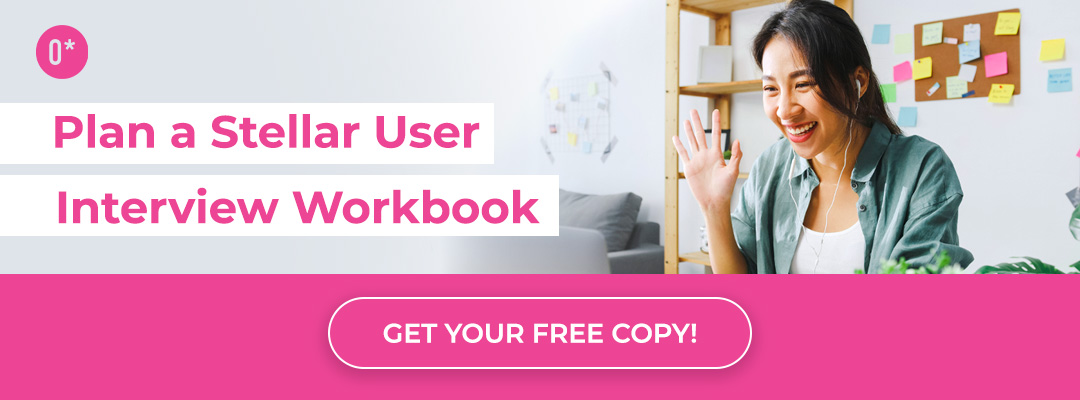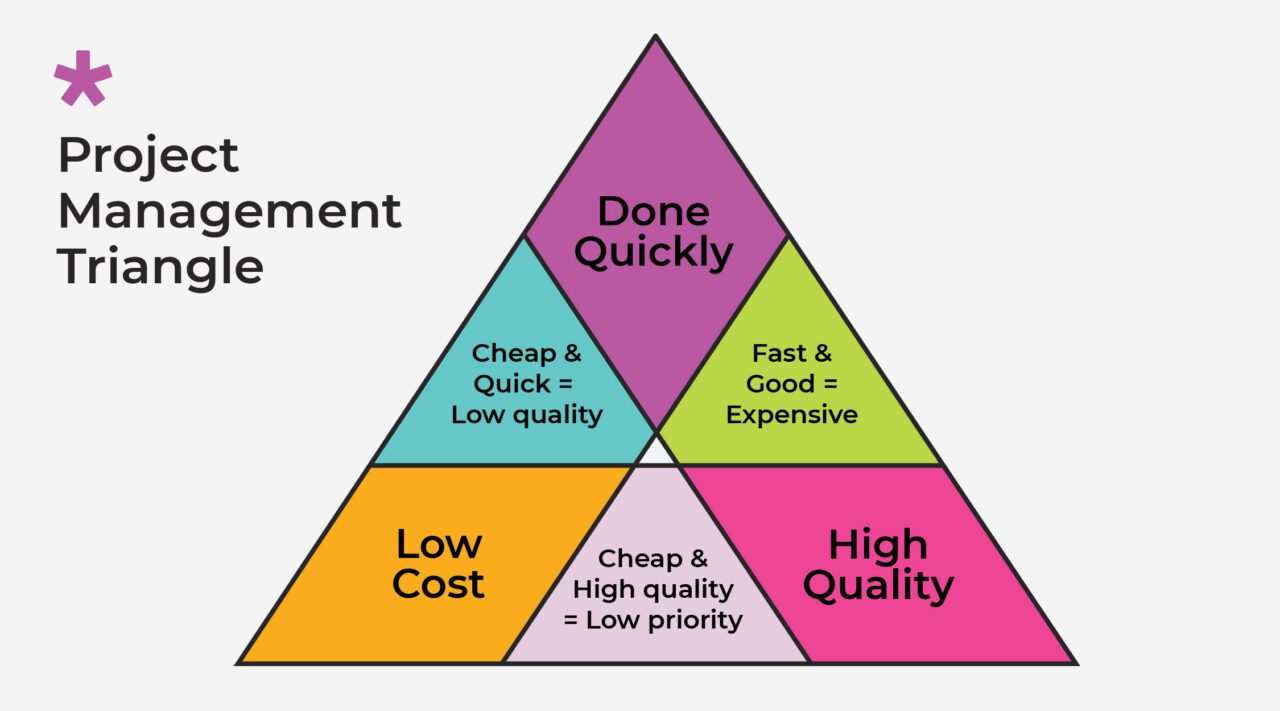As UX designers, we often face roadblocks that can challenge our ability to do the impactful work that means so much to us. We devote so much time to uncovering and advocating for our users’ pain points and barely leave any to focus on our issues. These obstacles come in many forms – from skepticism about the value of our work within product teams to the relentless cycle of churning out design after design without having time to dig into user needs.
The snowball effect can be overwhelming and frustrating, but whatever pain points you’re navigating, we’ve been there and got you covered. We wrote you this UX survival guide packed with practical tips, insights, and remedies to help you survive and thrive in your UX and product teams!
Whether you’re just starting or have years of experience, this guide will prepare you for the challenges ahead, provide strategies to overcome roadblocks and highlight the pain points you might encounter.
Let’s jump right in!
5 Common Challenges UXers Face and How to Overcome Them
Almost all of us UXers come across challenges in our day-to-day work, like balancing business needs with user needs, keeping up with the latest and greatest tools and methods, managing feedback and revisions, and much more. As promised, this blog is going to provide you with solutions to 5 common challenges UXers face, complete with tangible, actionable strategies on how you can overcome them.
1. How to Manage Speed and Time in UX Projects
One of the most common challenges UX designers and researchers face is balancing speed with quality. We often find ourselves in a tug-of-war between meeting tight deadlines and ensuring the product is built carefully and correctly. The very nature of human-centred design (HCD), which involves thorough research, empathy, and iterative improvements, can clash with the pressures to deliver quickly.
Plus, the rapid pace of technological advancement adds another layer of complexity! It can feel like we’re constantly playing catch up, chasing the newest tool and trying to stay on top of all the trends. It can be overwhelming, and we’re continually swimming upstream, trying to keep up.
Strategy: Effective Time Management and Organization
To effectively navigate these challenges, it’s crucial to focus on both time management and organizational strategies. While mastering organization can help you feel more in control of your time, dedicated time management techniques can further alleviate the pressure of those tight turnarounds and pressuresome deadlines.
Begin by setting clear priorities and deadlines for your tasks. Our expert design team recommends utilizing time-blocking methods to allocate specific periods for different activities, ensuring that critical tasks receive attention without being rushed! Techniques like the Pomodoro Method – working in focused bursts with short breaks – can help maintain productivity and reduce burnout.
Organizing your resources and tools is key to working efficiently under time constraints. We like to use tools like Trello, Google Drive, or OneNote (we all have our favourite!) to keep an inventory of resources, tools, methods, and other materials that help us with our UX work. You may already have your folder of sorts somewhere on your computer’s hard drive, but the key here is to keep it updated and all in one place. When you’re pressed for time, the last thing you want is to waste precious minutes searching for your copy of Outwitly’s empathy mapping template or that handy blog post you bookmarked last month.
Having relevant materials in your back pocket at all times is a great way to speed up your work process and power you to the next level. There is always that next best thing out there waiting for you to discover, so we recommend subscribing to relevant newsletters and blogs.
2. How to Advocate for the UX Process
Across all industries, measuring the productivity of employees and team members is a logical and common practice. However, it can sometimes lead to challenges, frustrations, and pain points, particularly in the field of UX design. Because UX design is such an innovative and creative process, measuring productivity can feel counterintuitive and difficult to objectively and effectively quantify. A lot of the time, UXers are trailblazers who are on undefined paths, creating solutions and products in ways that have never been done before. Naturally, these paths can be bumpy and winding, not necessarily something UXers can do ‘faster’ or ‘more productively.’
Our process doesn’t follow the typical route others may follow; we go backwards, start over, try new things, abandon old paths, and follow cyclical motions with product reiterations. To the naked eye, this can all look ‘unproductive.’ However, this exact process leads us to fresh, exciting, and innovative solutions and outcomes!
According to Outwitly’s expert design team, there are two strategies for overcoming this common pain point: maintaining a balance and advocating for your field.
Strategy 1: Maintaining a Balance
What balance should we try to maintain, you may ask? We’ve provided a graphic below to help you visualize:
You may have seen the project management triangle – a critical resource that we like to draw from in our work, as it grounds us and helps us produce quality, timely, cost-effective deliverables in our roles. Many say it’s near impossible to have all three in your work: high quality, low cost, and quickly made deliverables, but this is what we strive for!
Many teams want it all, but many will push hard for deliverables that are speedy and cheap, therefore sacrificing quality. This graphic helps us stay on track in our roles, especially when it feels like we aren’t being ‘productive enough’ or ‘fast enough. ‘ Good things come with time, patience, and balance.
Strategy 2: Advocating for Your Craft
In UX design, one of the most common challenges is demonstrating the value of our work to cross-functional teams and leadership. Traditional productivity metrics may not fully capture the nuances of UX work, which can lead to misunderstandings or undervaluation of the time and effort required to do excellent design work (which is beyond important!)
The reality is that there is always tech debt/design debt to work on. “Tech debt” and “design debt” refer to the backlog of improvements or refinements that need to be addressed in order to move forward on a project. Some examples of tech debt might be issues related to coding, system performance, or using outdated technology. Design debt involves design elements that need to be revised or updated for a better user experience. These are essential to address but might not always seem as immediately exciting as new features or shiny new updates.
The strategy and solution here is to advocate for your craft and manage these debts. Start by explaining the concept of tech and design debt to your product owner or manager, and give them a chance to understand why addressing these issues is critical for long-term product health and user satisfaction. Use examples to illustrate how unresolved debt can lead to bigger problems down the line, like decreased user satisfaction or increased development efforts in the future.
We then suggest proposing a balanced roadmap that integrates debt reduction with new features and sets realistic expectations for dedicating time and resources. Maintain transparency by providing regular updates on progress and impacts and work collaboratively to prioritize and address critical debt areas. By aligning on these strategies, you can ensure you’re meeting both immediate needs and working toward long-term goals and improvements – go team!
3. How to Champion UX in Your Organization and Cross-Functional Teams
As we mentioned above, the unfortunate truth is that many teams and workplaces may not understand what exactly it is that you do. This gap in understanding naturally results in some gaps in communication and role expectations, and thus, a pain point forms.
This gap can manifest itself in many different ways, such as:
- Working in a role that is outside key decisions.
- Facing changing requirements due to miscommunications or misunderstandings.
- Adapting to old design systems or legacy systems.
- Task sizing research and design efforts into sprintable tickets.
- Difficulties with practicing empathy and scheduling research.
These hurdles and difficulties can make it feel as if you are constantly having to adapt to new expectations and responsibilities, making the path ahead of you feel increasingly blurry, bumpy, and anxiety-inducing.
Strategy: Building Relationships and Learning
In this situation, we can’t always rely on the organization or workplace to make significant efforts to understand and connect with us! Sometimes, we need to take the initiative and do it ourselves. We encourage you to familiarize yourself with the workplace and organization so you can anticipate and plan for your role and expectations. We highly recommend you conduct some informal research about your organization to understand what drives its sales or revenue and then use that knowledge as a foundation for your role.
It’s also always great to find allies (or design champions) in your organization and build strong relationships to help them understand what exactly you do. Establish these connections, and slowly but surely, share your strengths and what you bring to the table. Familiarize yourself with the workplace dynamics to help you understand how you can best fit in and demonstrate your value.
4. How to Advocate for Change in the Workplace as a UXer
A commonality among all the common pain points we UX designers face in our careers is that these areas of frustration typically arise due to the environment of your workplace, not due to the work itself. Again, a major point of friction within workplace environments is having to advocate for yourself and navigate your ‘fit’ in an organization.
For example, you might find yourself needing to sprint ahead of developers, as it can be challenging to stay in sync. Or, there may not be a dedicated UX manager, so you might need to advocate for yourself or take on a similar role. Likewise, you may have to report to managers with skillsets outside of UX who may have difficulty understanding your work, progress, and roadblocks. We tell you this not because we want to scare you or make you anxious but because we want to prepare you for the realities of the UX world as it stands.
Strategy: Become the Change Champion
You heard it here first – you’re going to have to become the change champion. A lot of the time, the workplaces UXers are entering haven’t changed their ways or adapted to UX work and demands because they haven’t had to until now! This is your moment to educate stakeholders and teams on the value of research, data, and insights and communicate how you and your work can power them to achieve their business goals.
The best part of becoming a change champion is that while demonstrating how your skills will drive increased revenue, customer acquisition, or other key outcomes, you’re also showing executives just how valuable and influential you are, emphasizing the need for resources and support for design work. As intimidating as it sounds to lead such an effort and conversation, you can trust that you are paving a better road and career experience for yourself and any other UXers following in your path.
To learn how to champion the value of your work and HCD to executives, read our step-by-step blog post here!
5. How to Navigate Your UX Career Path
Speaking of paving the way, the final pain point you may face in your career is the career pathway itself. We understand it may not be comforting to hear that the road ahead will be bumpy, but it goes to show that there are so many turns, avenues, and opportunities you can explore in this industry.
Unlike other career pathways that may seem more linear or incremental, the UX and HCD world is full of different disciplines to explore, like UX design, UX research, service design, UI design, or even product management. We find the variety of choices exciting but often overwhelming when job hunting, particularly when different listings and organizations’ job titles and corresponding responsibilities all request and expect specific experience and varying hard and soft skillsets.
Strategy: Be Curious and Build Community
With career options seemingly endless and the path ahead looking blurry, understanding and acknowledging what you really want as a career can be as difficult as ever. This is why reconnecting with your UX or design passion is crucial, as it can help you realize why you chose to enter the exciting world of UX and HCD in the first place.
One great way to rejuvenate your passion for UX is to design things for fun once in a while! Take note of what you love to design and what part of the process is the most exciting. Perhaps you can use it to help guide your career journey! Advice from Janine Loo, a wonderfully talented member of our design team, is to continue taking on passion projects throughout your career and to see where you can introduce design into your everyday life. For example, next time you’re hosting a dinner party, try to view it from the lens of user (or, in this case, guest) experience. How can you make your dinner party the best possible experience for your guests? What details really move the needle?
Another great strategy for nurturing your UX passion is to focus on building a UX community and connecting with other passionate professionals. Learning about and listening to others’ passions, goals, and career journeys can inspire and clarify you, helping you define and refine your own career objectives. We wrote an entire blog post about the importance of a UX community, fully equipped with tons of online platforms, chats, and groups you can join. Check it out here!
With this UX survival guide in your back pocket or bookmarks tab, you’re officially ready for the journey ahead. It can be bumpy and frustrating at times, but we promise you that the meaningful work you’ll do that impacts real humans will make it all worthwhile.


 Diagram Credit
Diagram Credit



